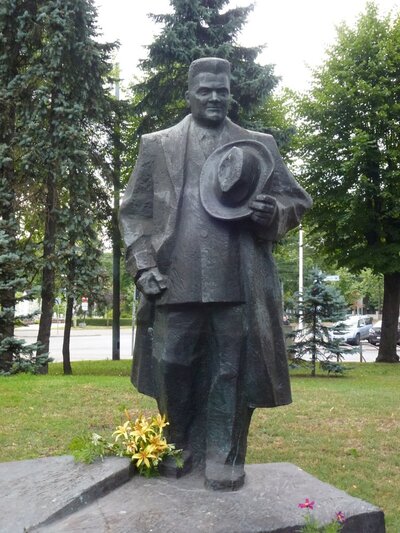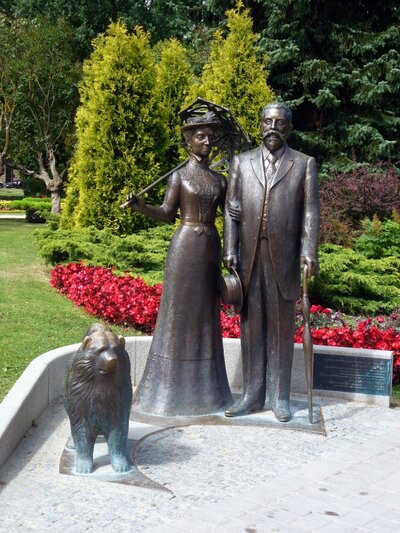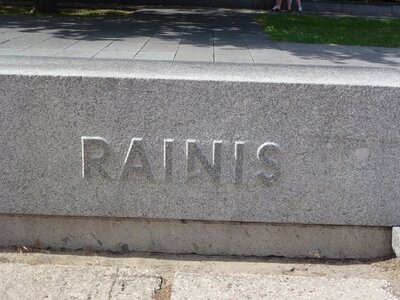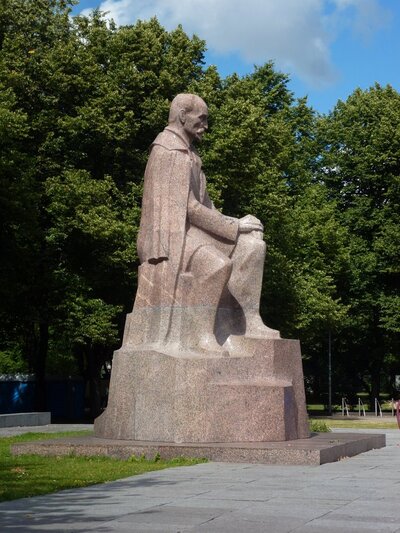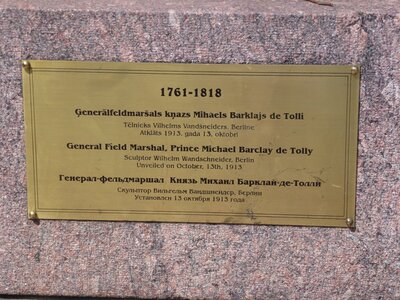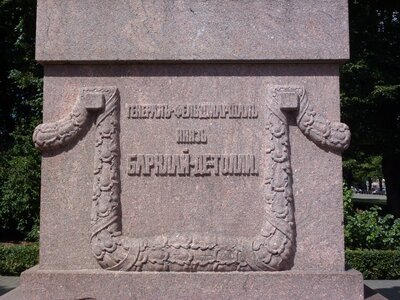The Monuments In Honor of Outstanding Latvian Citizens and Statesmen
Just as there were lots of Art Noveau buildings in Riga, there were just as many statues and monuments to something or somebody. Here were a few we saw who had links to Riga in one way or another. This entry by the way is a collage of photos I had included in earlier blogs about Riga during our sightseeing trips to Old Town and beyond.
Since I didn't know who they were, I looked them up on the internet and this is what I gathered from Wikipedia.
Karlis Ulmanis was a prominent Latvian politician in pre-World War II Latvia during the Latvian period of Independence from 1918-1940. He was first head of the Latvian Republic in 1918 and again in 1936-1940. He was premier in 1918, 1919-1921, 1925-1926, 1931-1932, and 1934-1940. His grand nephew, Guntis Ulmanis, was elected President of Latvia in 1993.
Alfred Kalnins was a Latvian composer, organist, pedagogue, music critic, and conductor. He as the founder of the National Latvian Opera. He is primarily remembered for his national opera, Banuta from 1920.
While in the park where the Freedom Monument was, Marc and I saw the monument of a distinguished man and woman with an English surname. We learned that they were the Armitsteads, Riga high society personalities who helped turn the Latvian capital from a small town into a major European city.
George Armitstead was born in Riga (then part of the Russian Empire) into a British merchant family. He graduated with honors from the Riga Polytechnical Institute and later studied in Zurich and Oxford Universities. He worked as an Engineer in Russia and then returned to the city of his birth. Back in Riga, he became a significant social figure and on May 7, 1901 was elected Mayor by the Riga City Council. Under his term, he built schools, hospitals, museums, libraries, cafes, and even a zoo, many of which still stand.
Rudolfs Blaumanis was a Latvian writer, journalist, and playwright. He is considered one of the greatest writers in Latvian history and particularly a master of realism.
Vilhelms Ostvalds was a Baltic German chemist who receieved the Nobel Pize in Chemistry in 1909 for his work on catalysis, chemical equilibria, and reaction velocities.
He was born in Riga and went to school at the University of Tartu in Estonia. There he graduated in 1875 where he also obtained his Ph.D. three years later.
Born in Riga last 30 August 1865 and died 12 September 1929, Rainis's works had a profound influence on the literary Latvian language, and the ethnic symbolism he utilized in his major works was key to Latvian nationalism.
The first time I saw this gentleman's statue, I wondered what his connection was to Riga given that he didn't have a Latvian name. It turned out that his grandfather served as the Mayor of Riga at one point. Anyway, he was a German speaking descendant of a Scottish family who settled in Livonia (now part of the present Republic of Estonia) and whose father was admitted into the ranks of the Russian nobility.
Prince Michael was Russian Field Marshall and Minister of War during Napoleon's invasion of Russia in 1812 as well as the subsequent campaign of the Russian Army in Europe.

